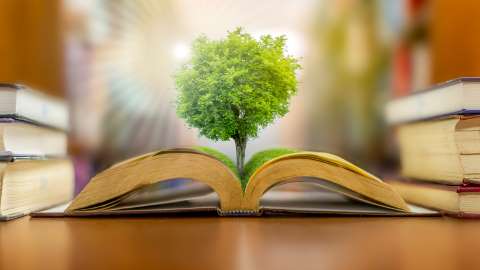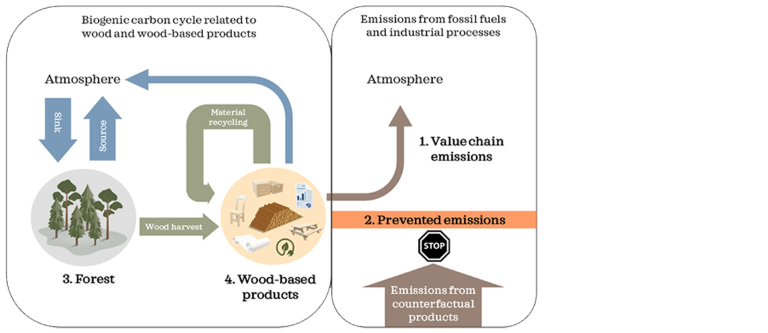CLEAR – a model for climate reporting

A new manual has been developed with the aim to provide a reporting methodology for the climate effect of corporations in the forest-based sector for use in, e.g., annual financial and sustainability reports.
Existing reporting methodologies, such as the IPCC Guidelines for National Greenhouse Gas Inventories and the Greenhouse Gas Protocol, give only a partial picture. They do not acknowledge that the forest-based sector contributes to both principal climate change mitigation objectives stipulated by the United Nations Framework Convention on Climate Change (UNFCCC):
- To control, reduce and prevent greenhouse gas emissions in all sectors.
- To conserve and enhance sinks and reservoirs of all greenhouse gases.

CLEAR includes four components that together provide a more complete picture of the company’s climate effect regarding wood and wood-based products in relation to these two goals.
Each component builds on established methodologies/standards that each represent a long history of climate-related reporting. The novelty here is to assemble the four components into a complete climate effect assessment.
In the model four components of storage and emissions of greenhouse gases are included:
- Value chain emissions
Value chain emissions are assessed for producing and placing wood-based products on the market, including recycling and final use. The measurements are conducted according to the principles of the GHG-protocol. - Prevented emissions
Greenhouse gas emissions avoided as a result of the use of wood-based products instead of more climate-intensive products are calculated. The assessment relies on data obtained from Life Cycle Assessments and similar studies. - Changes of carbon stored in forests
Here, changes in the carbon stock in the forest where wood was taken to produce the wood-based products is assessed. This is assessed according to the "IPCC Guidelines for National Greenhouse Gas Inventories" framework. - Changes of carbon stored in wood-based products (HWP)
Changes in the carbon stock in wood-based products in use in society is assessed. These assessments are also based on the "IPCC Guidelines for National Greenhouse Gas Inventories" framework”.

The manual provides a stepwise guide to assessments at the company level. Each step builds on existing and widely used standards for climate-related reporting, including the IPCC Guidelines, the Greenhouse Gas Protocol, and Life-cycle Assessments. It is complemented with an Excel sheet for calculation support, and a database of published data on displacement factors of wood-based products. For more information, go to the project page for CLEAR.
The administration of the CLEAR model is led by Skogforsk in collaboration with a number of parties, many of whom currently us the model to calculate their own organization’s climate impact. At present, these parties include Billerud, Derome, Holmen, Norra Skog, SCA, Setra, and Södra.
We welcome more organizations to become part of the administration of the CLEAR model. Contact us if you want to know more!
We will review and publish your comment as soon as possible.


